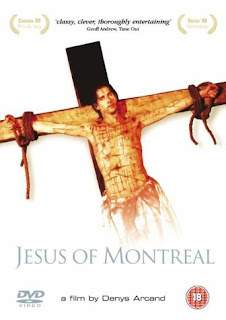 [Knock,
knock,knock]
[Knock,
knock,knock]Maid: [answering door] Yes?
Man in top hat: I'd like to see Mrs. Stoddard,if you'd be so kind.
Maid: Mrs. Stoddard?
Man in top hat: This is Collinwood, isn't it?
Maid: Yes.
Man in top hat: And the mistress here is Mrs. Elizabeth Collins-Stoddard, is she not?
Maid: Yes.
Man in top hat: Then perhaps you'd do me the courtesy to inform Mrs. Stoddard that her cousin is calling and wishes to pay his respects.
Maid: Her cousin?
Man in top hat: Yes. Her cousin from England.
Maid: From England? [clutches chest] Oh! Um, please come in.
And so was the entrance of one of the most interesting modern vampires, Barnabas Collins (played by the dark and regal Jonathan Frid). The word modern being relative. There have been a slew of shows with a vampire theme in recent years. But I don’t think many are as interesting as the original “vampire with a conscience”.
Dark Shadows was a soap opera that ran on ABC from 1966-1971. Its audience was housewives and eventually, as the series gained steam, school-aged children. Those kids included Johnny Depp and Tim Burton. Eventually Depp and Burton created a mediocre movie adaption. The gen-x goths really couldn't bottle the magic of the original series.
My experience with Dark Shadows began in the mid 90s while watching reruns on the Sci-fi channel. I didn't watch them in order and I mainly put it on as background noise, while studying for my undergraduate degree. Rubber bats hung in the air with visible fishing wire; camera guys were walking into the shots. The show was painfully low- budget and taped live. The DVDs note where the only available footage is damaged. The series didn't expect more than a one time run. Dan Curtis, the creator, had no idea that the show would have a life of its own many years later.
If you have never seen the show, I recommend starting at story arc episode # 209 where cousin Barnabas (the recently departed Jonathan Frid) comes knocking.
He bites the wrist of groundskeeper Willie Loomis (a young John Karlen Daughters of Darkness) in order to gain vitality. It was deemed less "gay" than a man to man neck bite (which wouldn’t pass by censors at the time).
Sci-fi enthusiasts will enjoy the story lines involving parallel time. It's pure camp when Barnabas goes back in time to rescue a family member (in 1969) by invoking the "I-Ching".
The show includes some great actors. Joan Bennett, who was the most famous actor in the series, was a film actress dating back to the silent film era. She plays the role of matriarch of this crazy family with a straight face. She is always pouring some kind of drink. And with the things that are going on in the house, she needs it. Bennett must have had a heart for horror films, as her final role was Madame Blanc in Suspiria. Actress Grayson Hall, who plays Dr. Julia Hoffman, is great fun as the psychiatrist, who sympathizes with Barnabas and helps him by medically treating his vampirism.
The character Angelique (played by Lara Parker, also in the film Race with the Devil) is a witch from French Barbados who will not leave Barnabas alone. She is one nightmare of a one-night-stand. I love Parker's evil stare. Her acting is all in her eyes. They really creep you out! Revenge is sought after Angelique is humped and dumped in the 1700s, while Barnabas is vacationing. He wasn't aware that she is a voodoo practicing witch on the island. She follows Barnabas in his time travels, always taunting and destroying lives of the ones he loves. The dynamic is the most interesting element of the show. You know when she gets out her voodoo doll, someone is gonna catch some serious shit. Each time Angelique is killed or cast back to Hell, she reincarnates and takes possession of another body; usually entailing Parker sporting a different colored wig. It's hilarious and intriguing at the same time. I’ve always been a sucker for doppelganger stories.
As you progress in the series, it goes from black and white to color. It's so neat to see the opening credits read: Dark Shadows, in color! You imagine what an event it must have been to see blood in color on a television screen!
There are a few great comic book series that have been made, based on the show. Dynamite Entertainment currently has a series out that takes a darker view of Barnabas than daytime TV would allow. I prefer it to the Tim Burton remake.
Netflix, at this time, has one set of the show, starting with the arrival of cousin Barnabas (episode #209) viewable through streaming. The entire series is available on DVD.
When I see modern vampire tales today (think Twilight, True Blood, the list goes on) I think about what the cast and crew of Dark Shadows were able to do with so little, in regard to special effects , to make a compelling story. According to the actors, in interview, there were no retakes. Rubber bats, fumbled lines, and plastic vampire teeth add to this kooky marvel of a show!
 |
| Vampire Josette |
 |
| Victoria Winters and the cast of crazy kooks! |
 |
| Maggie Evans's vampire induced reality blur becomes Josette Du Pres |
 |
| Dynamite Comic's dark adaption of the series |




















